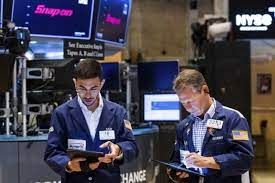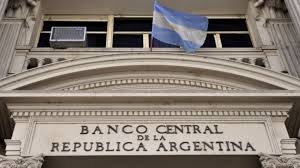After plunging into a bear market on concerns about a shaky economy and increasing rates, Wall Street is waffling between gains and losses in its first trading session on Tuesday.
The S&P 500 was up 0.1 percent in early trade as a couple of large corporations demonstrated their financial resilience with higher profits and dividend payouts to shareholders. However, the gain was erratic, with the index fluctuating between a 0.1 percent loss and a 0.8 percent gain in the first half-hour.
As of 10:20 a.m. Eastern time, the Dow Jones Industrial Average was up 5 points, or less than 0.1 percent, at 30,522, and the Nasdaq composite was 0.1 percent higher after bouncing between gains of 0.9 percent and losses of 0.3 percent.
Following Monday’s global crash, trading was significantly calmer, if still shaky, throughout markets. Treasury yields were falling from their highest point in over a decade. Stocks in Asia and Europe were similarly mixed, with a gauge of investor jitters on Wall Street sliding down.
Bitcoin, for example, plummeted another 6.5 percent to below $22,100, according to CoinDesk. Cryptocurrencies have been among the hardest hit in this year’s market sell-off, as the Federal Reserve and other central banks boost interest rates to combat inflation and forcefully turn off the “easy mode” that has kept markets afloat for years.
A report showing wholesale inflation was slightly lower in May than predicted, albeit it remains quite high, provided some assistance to the market.
Economists believe the statistics will not prevent the Federal Reserve from raising its key interest rate by a larger-than-normal amount this week, with some even predicting the greatest hike since 1994, which would be triple the average amount. However, the data provide some relief given last week’s market-beating news that showed consumer inflation surged last month rather than improving.
The bond market’s relatively dependable recession warning signal was also weakening. At 3.32 percent versus 3.35 percent, the yield on the two-year Treasury slid back below the yield on the 10-year Treasury. The two-year yield is usually lower than the 10-year yield, and when it isn’t, some investors see it as a hint that a recession is on the way in the next year or two.
Oracle’s stock rose 9.5 percent on Wall Street after the company reported better revenue and earnings for the most recent quarter than experts predicted.
FedEx’s stock rose 14.2% when the company increased its dividend distribution by more than 50%.
It was the first day of trading for US stocks since the S&P 500 finished Monday at a 21.8 percent loss from its early-year high. This put it in a bear market, which is defined as a decrease of 20% or more in value.
The US Federal Reserve’s effort to contain inflation by raising interest rates is at the heart of the sell-off. The Fed is scrambling to bring prices under control, and one of its key tools is to raise interest rates. However, this is a harsh tool that could slow the economy too much and lead to a recession.
Other central banks around the world have started hiking rates as well, notably the Bank of England, and the European Central Bank has stated that it will do so next month and in September.
Oil and food costs are skyrocketing as a result of the Ukraine conflict, driving inflation and sapping consumer spending, particularly in Europe. Meanwhile, COVID infections in China have prompted some harsh, business-slowing regulations that threaten to stifle the world’s second-largest economy and exacerbate clogged supply chains.
“The old, pre-corona equilibrium of low inflation, ultra-easy monetary policy, and low geopolitical risk premiums no longer holds,” said Andreas Koester, portfolio manager at Union Investment in Frankfurt, Germany.
“Right now, we’re in the midst of a transition to a new, post-corona equilibrium,” Koester continued, “of which just the contours are evident, such as rising inflation or a return to great power struggle on the international stage.”
The move by central banks, particularly the Federal Reserve, toward higher interest rates has halted the phenomenal surge in stock prices that was fueled by tremendous market support after the epidemic struck in early 2020. On top of several dismal indications about the economy and business profitability, notably a record-low preliminary rating on consumer sentiment sullied by high gasoline costs, markets are bracing for more larger-than-usual hikes.
Higher interest rate benchmarks boost returns on less speculative investments like bonds, making them more appealing to investors than stocks. And the reforms are intended to slow the economy by making borrowing more expensive.
If central banks raise rates too high or too soon, they risk causing a recession. The Federal Reserve announced last month that additional rate hikes of double the typical level are inevitable in the coming months. Consumer prices in the United States are at their highest level in four decades, rising 8.6% in May compared to the same month a year ago.


















